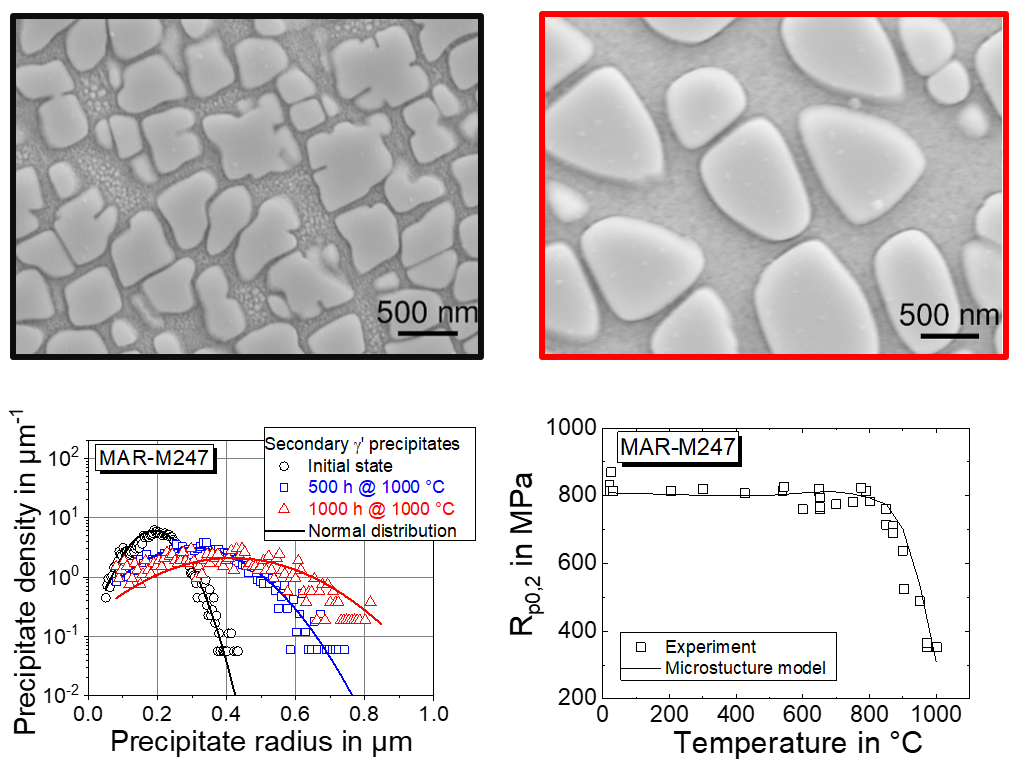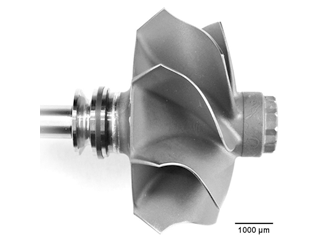Methods for the systematic substitution of critical and cost-intensive alloying elements in nickel-base superalloys (TurbsoSubst)
Methods for the systematic substitution of critical and cost-intensive alloying elements in nickel-base alloys
One measure to reduce CO2 emissions from motor vehicles is to increase the exhaust gas temperature. For turbine wheels of the exhaust gas turbocharger, materials are required to have high mechanical properties and corrosion resistance at temperatures between 800 and 1000 °C. These expensive nickel-based alloys, originally developed for aircraft turbines, contain alloying elements that rarely occur on earth and in some cases can only be sourced from politically unstable regions. In a project funded by the Baden-Württemberg Ministry of Economics and Housing which uses the turbine wheel as an example, Fraunhofer IWM developed and evaluated an integral process for the systematic substitution of alloying elements in technical high-temperature alloys while maintaining functionality.

High-temperature strength mechanisms
Intermetallic phases, in this case γ‘-precipitates, contribute significantly to the strength of nickel-based alloys at high temperatures by hindering dislocation motions in the nickel matrix. The hardening contribution to the static yield point depends on the size and morphology of the γ‘-precipitate (precipitate hardening). The dislocations cut smaller γ‘-precipitates and bypass them when they reach a critical size. At temperatures between 600 and 800 °C, the yield point increases somewhat because dislocations slide across larger γ‘-precipitates. The manufacturing process is optimized to selectively precipitate different γ‘-precipitate populations. At high temperatures, diffusion processes set in that can lead to coarsening, coalescence, and eventual dissolution of the γ‘-precipitates. These microstructural changes lead to deterioration of the high-temperature strength. Other significant mechanisms include hardening of the solid solution by impurity atoms (solid solution hardening) and by grain boundaries (fine grain hardening), which also act as barriers to mobile dislocations.
Microstructure-based modeling of high-temperature strength
The temperature and time-dependent microstructure evolution of several nickel-based alloys with different contents of critical or rare alloying elements was systematically investigated. The γ‘-precipitate radius of several nickel-base alloys was determined in the initial state and after ageing in the laboratory furnace at 900 °C and at 1000 °C, respectively, between one and one thousand hours. For this purpose, high-resolution images of the microstructure were taken under a scanning electron microscope and quantitatively evaluated. A model was tested which uniformly describes the yield point based on the amounts of precipitate, solid solution and fine grain hardening. The evolution of the precipitate radius of the γ‘-precipitates could be predicted by thermodynamic-kinetic calculations using MatCalc software and used as input to the model which calculates the temperature-dependent yield point and evaluates creep properties. To validate this predictive model, mechanical properties of several nickel-based alloys were determined in addition to the microstructural investigations and prediction comparisons.
Project name: Turbosubst — Integral process for the systematic substitution of critical and cost-intensive alloying elements using the example of turbine wheels for exhaust gas turbochargers
Funding source: Ministry of Economics, Labor and Housing, Baden-Württemberg
Project code: B7-aj/792621-019
Back to Assessment of Materials and Lifetime Concepts Highlights
 Fraunhofer Institute for Mechanics of Materials IWM
Fraunhofer Institute for Mechanics of Materials IWM